European Ball Screen Continuity Offense With Lason Perkins
And this certainly isn't a bad thing. Ball screens are a great tool for any offense and a great way to teach players how to play.
I'm a motion guy, but as long as you have a couple of decent ball handlers on the floor, I could see this being used with players 11 years and older.
Advantages Of European Ball Screen Offense
- SIMPLE - This is a very simple continuity, but very effective at all levels. The simple pattern makes it easy for players to learn.
- Flexible - The offense will allow you to get the ball
to your best player whether they are a dominant guard or
dominant post player.
- Very hard to guard - The defense has to be very adept to fighting through screens. You'll notice that defenses might guard the first screen
very well or even the second, but after three, four, five, or even six screens, the defense will eventually break down.
- Constant continuity - The offense has constant continuity with movement across the court which causes the defense
to work harder. As a result, you'll be able to exploit gaps in their defense.
- Constant cutting movement - In addition to guarding screens, the defense has to control the constant cuts by the offense.
- Spreads floor - It spreads the floor and makes the defense work harder and opens up gaps for the offense which makes it easier to attack the basket.
- Use your quickness advantage - Smaller teams can take advantage of their quickness advantage over bigger teams.
- Take advantage of having good post players - With your big guys constantly setting screens, a mismatch is bound to be exposed on a switch or bad defensive play. As soon
as this happens, this offense will have your bigs and your guards ready to attack.
- Tweakable - The offense can be tweaked to work for your personnel. You can hide players and set them as screeners or you can have your best player be the screener to take advantage of mismatches.
To get FREE 33 Winning Basketball Plays, click the banner below
Ball Screen Offense Continuity
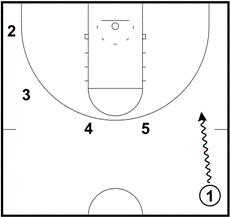
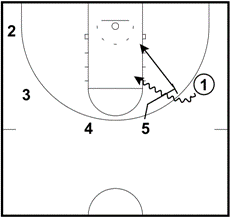
1 attacks the ball screen and looks to score.
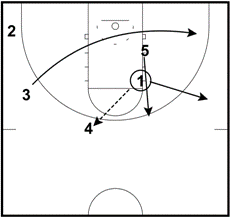
As 4 receives the pass, 3 cuts to the basket and clears to the opposite corner. 1 cuts to the opposite wing. 5 cuts to the top.
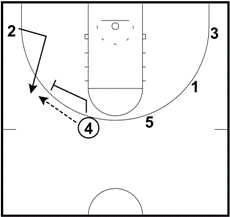
4 follows the pass and sets a ball screen on the wing.
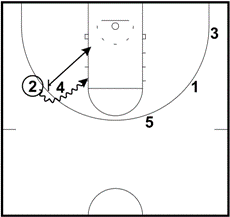
4 rolls to the basket.
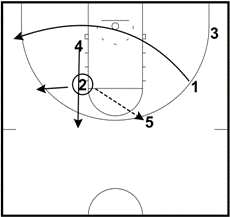
2 fills the opposite wing.
4 cuts to the top.
1 basket cuts and fills the opposite corner.
Next, 3 would cut to receive the pass. 5 would pass and set the ball screen. And the ball screen offense would continue.
Ball Screen Offense Adjustments
Based on how the defense reacts, the offense will need to make adjustments when attacking the ball screen in order to be successful.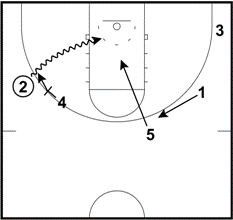
If the defense plays the top side of the screen and the baseline is open, 2 can reject the screen and drive baseline.
4 fills behind 2 for a safety valve.
5 cuts to the rim for a pass or rebounding opportunity.
1 fills the top.
3 drifts and finds an open spot along the perimeter.
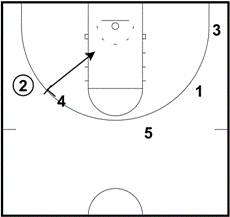
The slip is a great option for the screener to use when the defense hedges hard and also to keep the defense guessing.
4 goes to set the ball screen. But rather than waiting for 2 to attack the screen, 4 immediately cuts to the basket.
Looking to add a ball screen offense? Check out the Billiter Rocket Offense.
To get FREE 33 Winning Basketball Plays, click the banner below
What do you think? Let us know by leaving your comments, suggestions, and questions...
|
||||||||||||||||||||||||||||||||

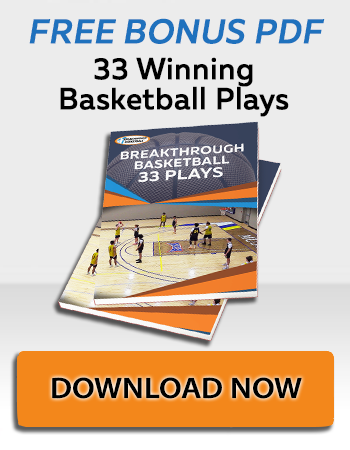


 Facebook (145k Followers)
Facebook (145k Followers) YouTube (152k Subscribers)
YouTube (152k Subscribers) Twitter (33k Followers)
Twitter (33k Followers) Q&A Forum
Q&A Forum Podcasts
Podcasts